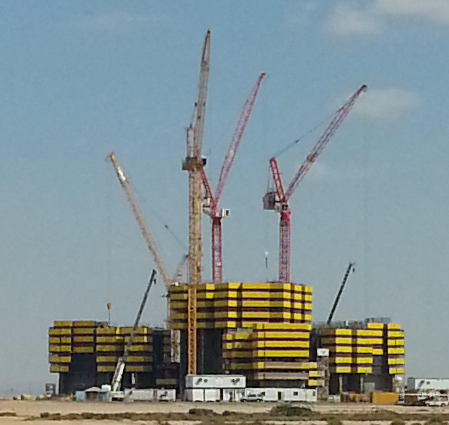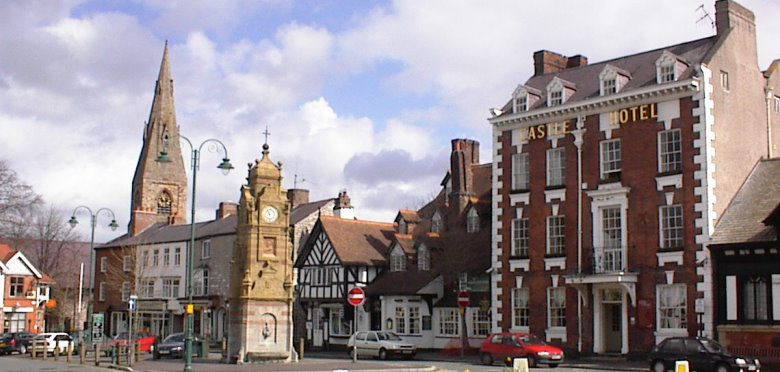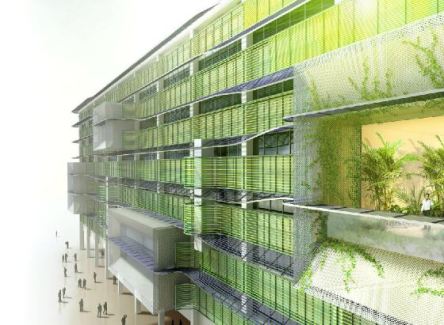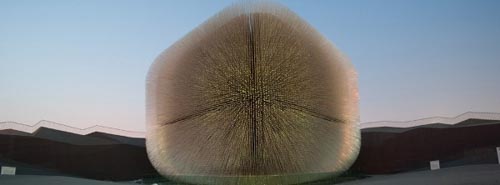The ancient Arabian port of Jeddah sits along the Red Sea, waiting patiently for barges and cruise ships. Meanwhile, just a few miles north, desert dust rises up in bursts as new Jeddah City rises up from the amber dunes spread out along the Arabian Peninsula. While the new Jeddah City’s horizon may currently play host to construction cranes and scaffolding, in just under five years a modern oasis will shine amongst the desert sands, greeting tourists, international businessmen and pilgrims on their way to Mecca. In an effort to revitalize this important entry point into Saudi Arabia, the Kingdom City, Jeddah project will include 5.3 million square feet of shops, restaurants, offices, residential apartments unfurling at the base of Jeddah Tower, a 1-kilometer edifice set to seize the mantle of “tallest building in the world.” Previously known as Kingdom Tower and initially designed to be one-mile high, the revamped and slightly scaled-down Jeddah Tower will house a 200-room Four Seasons Hotel, over 300 apartments, and the world’s highest observatory platform jutting out 200 feet above the mouth the city’s man-made harbor. The sleek, futuristic, minaret with a completion date of 2020, will also include several viewing decks and a 250-meter spire striking out into the clouds. The tower is expected to cost about $1billion, with the entire project estimated to sit somewhere in the ballpark of $20 billion. Indoor environment will be controlled via design and technology. Large notches along the exterior will allow for shaded terraces. Cool air at the tower’s peak will enable natural cooling, and the tower’s orientation guarantees no significant surface area will directly face the sun. The structure will also be energy and water efficient, with low-conductivity glass controlling cooling costs and thermal loads, and air conditioning condensate...
Eco-Conscious Architecture
Office architects embrace green design
A healthy office environment is what keeps a company strong. Many of the West Coast tech companies that have experienced tremendous growth in recent times have recognized the benefits of sustainable architecture and built their campuses around green principles, with an emphasis on creativity and fluid design. Major tech players of the modern world, including Google, Apple, Samsung Electronics or Nvidia, are currently working on super-sized office parks that feature avant-garde designs and cohesive work environments. While they are all incontestably unique in terms of architecture and design principles, there’s one recurring theme that brings them forth as stewards of the environment: particularly their focus on eco-consciousness and livability. Samsung is working with architecture firm NBBJ to develop their new American headquarters in Silicon Valley. The outfit’s design embraces new urban guidelines established by the City of San Jose which call for densification, active streetscapes, and environmental stewardship, as pointed out by NBBJ. The state-of-the-art campus will be anchored by a 10-story tower, enhanced by an amenity pavilion and an 8-story parking garage. An abundance of green space and recreational facilities will be integrated throughout the development with the precise intent to induce a state of relaxation for all employees and encourage interaction among company staff. With its imposing height and innovative form, the new HQs are aimed at creating a powerful brand image for Samsung. The tower is clad in white metal and clear glass, balanced to reduce solar heat gain. The podium is clad in warm terracotta hues and metals that are sympathetic to the traditional colors of San Jose. Besides promoting healthy lifestyles, green design acts as leverage when it comes to attracting and retaining the best and the brightest talent in the highly competitive tech market, which is growing at a faster rate than overall employment. Working out of a nurturing and supportive space is extremely stimulating for employees in the creative sector, and it becomes a real help in boosting office productivity. The office park will become home to 2,000 Samsung employees and will be divided into two sections: R&D and sales. A courtyard will connect the building together, creating a central gathering place to facilitate communication and collegial interaction. The intuitive design ensures that each Samsung employee is no further than one floor away from green space, which is something that you wouldn’t commonly see in most high-rise structures. Moreover, the property offers a wide range of amenities including fitness facilities, artwork, and cafes — some of which will be open to the public – making it easy for employees to bump into each other and share opinions. In addition to encouraging collaboration and innovation, the structure was envisioned as a staple of green engineering. Highly energy-efficient elements and eco-friendly materials have been incorporated throughout the building; for example, a rooftop solar array on the parking garage will provide renewable energy; the tower’s façade is designed to reduce solar heat gain, which reduces energy costs related to cooling a building; clear glass will allow natural light deep into the floorplate; and trees and water features provide connections to the environment. NBBJ identifies five trends impacting high-tech office design that any organization, big or small, high-tech or low-tech, can take advantage of to improve operational performance, employee wellbeing and talent recruitment: changing demographics, knowledge sharing, desire for wellness, digital meets physical and new architecture technologies. Learn more about each of these trends by clicking through the slideshow...
Next Gen Design
Student-Inspired Ideas for Buildings + Cities
Commercial developers are seeking fresh new insights—and in some cases, designs—from the next generation of creative thinkers: students. Developers of small towns and established institutions are looking past architects and into the untested waters of university classrooms. Student-inspired development has become more common throughout the nation, with good reason. To many observers, American architecture had become stale, lacking the creativity seen in other leading nations. The high costs did not yield the cutting edge buildings developers yearned for. In response, educators across the US shifted their focus, intensifying emphasis on innovation and good, old-fashioned out-of-the-box thinking. As an indirect result, universities soon became the place to seek fresh insight at a very affordable price point. Youth has become a unique asset. Creativity flows unhindered by status quo or past disappointments. This generation has also been shaped by rapidly-changing technologies, boundless research opportunities, and an atmosphere that promotes sustainability and resourcefulness. Students have become the ideal inspiration for those who are looking to develop their business, institution, or city on a budget while tapping into the mindset of the future. Montana State University architecture students joined forces to help Big Horn County Historical Museum and Visitors Center recreate its image. Students created displays for the museum, designed a new logo, created murals, and organized a cross-referencing system that would make navigating the ground’s nearly 30 historic buildings more manageable. “The students inspired us to do so many things,” says Diana Scheidt, museum director. Interest in the museum has spiked, particularly due to the students’ model replica of Fort Custer which disappeared nearly a century ago. The young adults brought it back via plenty of research and a nifty 3D printer. School of Architecture students at the University of Notre Dame were called upon to help with future development plans for South Bend (left). South Bend leaders become interested in capitalizing on the group, hoping to reinvent the area as a retail and dining destination for students and visitors alike. To complete the project, the student team studied 11 successful college towns in the US before presenting ideas to community officials and residents. Proposals included the addition of mixed-used facilities with budget-friendly housing, more shops and cafes, and expanded roadways to promote pedestrian traffic and cycling. These projects would help link the isolated university to the nearby town, encouraging economic and social opportunities to flow in both directions. Jitin Kain, director of planning for South Bend, has announced that developments in the downtown area are already in progress. While university students can offer unique insights, the cost effectiveness of their services undoubtedly plays a role in their value. Student projects save cash. Tweaking an amateur project may prove to be more economically savvy than purchasing a design from an established firm. Mayor and trained architect Gavin Harris sought the help of students to create development and expansion plans for the town of Ruthin (right), located in North Wales. His decision was made two fold. Primarily, students are the visionaries of the future and he wanted to ensure that his town would appeal to future artisans and tourists. Secondly, student designs fit the town’s modest budget. “If we had not done it this way, we would never have been able to afford it. A private practice would charge £40,000-£50,000,” he said in an interview with BBC News. The student-led initiative cost less than £5,000. Urban SOS, a student competition sponsored by AECOM and hosted by American Institute of Architects NY, tackled resident issues this year. With the intent of vanquishing the slums, finalist teams focused on a suburb of Ciudad Juarez, the Kiberia neighborhood of Nairobi, and inner Bogotá. The Kiberia team won, taking home $5,000 as a grand prize. They were also awarded $25,000 toward making the project a reality. The neglected neighborhood certainly did not have the funds to propel its own renaissance. Through student award money and free project...
Algae Architecture
Building with green slime
Net-zero building has come a long way since its nascent stages. Designers and engineers once struggled to find methods that allowed occupants to live with modern comforts without relying on unsustainable energy sources. Passive solar heating, solar panels, hydropower and wind turbines posed viable solutions for indoor climate control and power generation but each reaches limitations in select environments. Green builders needed a power source that could be used on buildings across the globe regardless of climate, urban, or rural settings. All eyes turned to the little green slime that might just save the day. Algae are plenteous, hardy organisms that can survive in extreme conditions. They need only a bit of water and sunlight to thrive; by simply doing what they do best, algae create the type of energy that can produce electricity, purify water and freshen the air. Innovative scientists have been exploring algae’s potential for well over a decade. What they’ve found has caught the attention of green builders. Exhibition superstars Splitterwerk Architects is in the process of constructing its latest zero-energy housing community, BIQ. The BIQ building harvests power through the use of a bio-adaptive façade that houses countless microalgae. The façade is composed of louvres that allow the algae to flourish in natural light. (Imagine a building clad in tiny, narrow fish tanks and you’re thinking in the right direction.) Within their transparent homes, the algae transform the sun’s energy into chemical energy through photosynthesis; the algae consume carbon dioxide and release oxygen, creating fatty lipids in the process that can be converted into practical energy for the building’s use. By using algae as a source of power, the BIQ can operate with minimal reliance on the grid and great cost-savings to its inhabitants. Though BIQ will be...
Beating Back Boring
Is architectural creativity dead?
Without making a few drastic changes to the way that American students see creativity, Americans will continue to lag behind other nations in innovative architecture. As the daughter of a very zealous architect, I have grown up tuned-in to the trends that pass through the world of architecture. Our coffee table was stacked with photography books depicting the boldest, most ingenious designs. As a teen, though, I looked at those texts like images from another world. They differed from the boring block school that I attended or the quadrant-riddled hospital a block from my house. Those fancy buildings were elsewhere. Like Sweden. Not much has changed since I was a teen and the rest of the world is beginning to take notice. With the exception of a few shining stars (Skidmore, Owings & Merrill and Steven Holl come to mind in recent history) American architecture seems to lack the creative edge seen in places like Singapore, Japan, Denmark, and China. The lack of innovation goes beyond aesthetics into energy efficiency, resource harvesting and conservation. Many new American firms refuse to toe the boundaries already broken by international counterparts. Some believe the cause is a lack of creativity on behalf of American clients and architects. An appreciation and pursuit of ingenuity has dwindled in our culture. Newsweek ran an article featuring the research of Kyung Hee Kim, associate professor of educational psychology at the College of William & Mary. Kim administered the Torrance Tests of Creative Thinking (TTCT) which measures three fields of creativity, with questions including topics such as art, mathematics, engineering, science, and interpersonal relationships. After studying the results of 300,000 American participant, Kim noticed a marked decline in creativity when comparing notes to past studies. The scores for elaboration—“ the ability to develop and elaborate upon ideas and detailed and reflective thinking [that] also indicates motivation to be creative”—dropped most significantly “by 19.41% from 1984 to 1990, by 24.62% from 1984 to 1998, and by 36.80% from 1984 to 2008.” According to the tests, the nation has lost the motivation to be creative. As Kim sees it, “The recent decreases in creativity measures indicate a threat to national security.” She stands corrected on a few fronts. In the past, American ingenuity propelled a young, inexperienced nation to stand as a world leader on the forefront of science, technology, and industry. Such haughty accolades seem to be slipping through our fingers by the day. Beyond walking with our heads held high, ingenuity leads to creative ways to solve daily problems. Without that creativity, our very cities are at risk. Brent Ryan, the Linde Career Development Assistant Professor of Urban Design and Public Policy in MIT’s Department of Urban Studies and Planning believes that “bolder, more distinctive civic projects can enhance the comparative advantages of cities as dense, diverse, lively places to live.” In a recent interview he explained that shrinking cities such as Detroit and Philadelphia need a boost in inventiveness to get back on track. Good design (not nearly functional design) shows residents that a city is moving forward; without visual representations of progressive thinking, “it’s harder for [residents] to see a development in their city that leads the way forward.” Good design speaks to structures that inspire minds and solve problems: managing stormwater, recycling graywater, conserving and producing energy, and so fourth. Dying cities need buildings that cooperate with the surrounding environment and support healthy lifestyles for dwellers’ instead of working against them both. To Ryan, innovation should extend beyond opera houses and high rises to “reunite a social agenda with a progressive design agenda.” Without such a creative approach to building, struggling cities risk falling into further disarray. Harboring a tradition of mediocre design may also threaten our nation by alienating the creative minds that we have with us. Frank X. Arvan, President of the American Institute of Architects in Detroit, issued a compelling letter...




